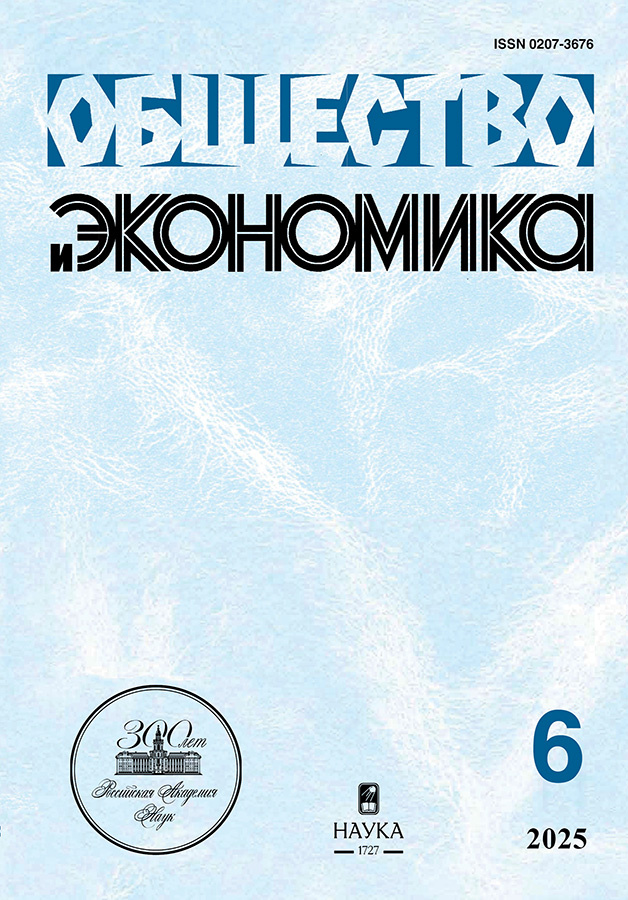On the transformation of Russian savings into investments and on the obstacles holding back this process
- Authors: Kapkanshchikov S.1
-
Affiliations:
- Lomonosov Moscow State University, Sevastopol branch
- Issue: No 10 (2024)
- Pages: 28-46
- Section: ECONOMIC POLICY
- URL: https://freezetech.ru/0207-3676/article/view/674123
- DOI: https://doi.org/10.31857/S0207367624100038
- ID: 674123
Cite item
Abstract
The article aims to uncover the relationship between the total national savings and real sector investment of the Russian economy, as well as to identify ways to ensure their dynamic alignment at an optimal level in the foreseeable future. In justifying the reasons and methods for overcoming the existing imbalance, the author emphasizes the impact of the paradox of thrift, which leads to deterioration of the investment climate due to people’s low consumer activity. Additionally, the article highlights the significant share of unorganized savings among Russians due to their lack of trust in the domestic financial system, their preference for keeping their savings in convertible currency, and the relative immaturity of the Russian stock market.
The article also explores the mechanism of the negative impact of the deficit (as well as the surplus) of the federal budget on the level of private and public investments in the domestic economy. The main focus of the article is on analyzing the reasons for the net capital outflow from Russia as a factor resulting in insufficient real investments compared to the level of domestic savings. This includes an examination of the contribution to this outflow not only from households and private companies but also from the government, which, during the pre-sanction period, preferred to invest the funds of sovereign wealth funds in financial assets of other countries instead of using them to stimulate investment in the national economy.
Full Text
About the authors
Sergey Kapkanshchikov
Lomonosov Moscow State University, Sevastopol branch
Author for correspondence.
Email: kapkansv@mail.ru
Grand Ph.D. in Economics, Professor, Head of the Department of Economics
Russian Federation, SevastopolReferences
- Аганбегян А. О месте экономики России в мире: по новым данным о международном сравнении ВВП // Вопросы экономики. 2011. № 5. С. 43–55.
- Аганбегян А.Г. России требуется политика форсированных и эффективных инвестиций // ЭКО. 2014. № 7. С. 6–11.
- Акиндинова Н., Кузьминов Я., Ясин Е. Российская экономика на повороте // Вопросы экономики. 2014. № 6. С. 4–17.
- Булатов А. Капиталообразование в России // Вопросы экономики. 2001. № 3. С. 54–69.
- Булатов А.С. Новые тренды в движении капитала в мире и России // Вопросы экономики. 2023. № 9. С. 65–83.
- Григорьев Л.М., Макарова Е.А. Норма накопления и экономический рост: сдвиги после Великой рецессии // Вопросы экономики. 2019. № 12. С. 24–46.
- Губанов С. Вероятна ли мировая рецессия-2012? // Экономист. 2012. № 1. С. 3–10.
- Дементьев Н.П. Проблемы доходности внешнего сектора экономики России // ЭКО. 2014. № 11. С.168–183.
- Драпкин И.М., Лукьянов С.А., Бокова А.А. Анализ прямых иностранных инвестиций на внутренние инвестиции в российской экономике // Вопросы экономики. 2020. № 5. С. 69–85.
- Ершов М.В. Мир 2021: сохраняется острота пандемических и экономических проблем // Вопросы экономики. 2021. № 12. С. 5–20.
- Комолов О.О. Отток капитала из России в контексте мир-системного анализа // Экономическое возрождение России. 2018. № 2. С. 128–140.
- Кудрин А., Сергиенко О. Последствия кризиса и перспективы социально-экономического развития России // Вопросы экономики. 2011. № 3. С. 4–19.
- Маневич В. Альтернативные стратегии преодоления стагнации и «новая модель роста» российской экономики // Вопросы экономики. 2017. № 8. С. 121–137.
- Маневич В.Е., Слуцкин Л.Н. Долговременные макроэкономические факторы динамики российской экономики: Научный доклад. М.: Институт экономики РАН. 2017. 48 с.
- Мау В. Антикризисные меры или структурные реформы: экономическая политика России в 2015 году // Вопросы экономики. 2016. № 2. С. 5–33.
- Мау В. Экономика и политика 2019–2020 гг.: глобальные вызовы и национальные ответы // Вопросы экономики. 2020. № 3. С. 5–27.
- Нестеров И.О. Монетарная экспансия, фискальное стимулирование и международные резервы в системе национальных экономических интересов России: старые проблемы и новые вызовы // Вестник СПбГУ. Экономика. 2021. Т. 37. Вып. 3. С. 371–394.
- Погосов И. Макроэкономический потенциал накопления // Экономист. 2008. № 7. С. 34–47.
- Поливач А.П. Интернационализация рубля: перспективы процесса и его потенциал в противодействии антироссийским санкциям // Российский экономический журнал. 2018. № 5. С. 73–85.
- Сафонова О.В. Отток капитала из Российской Федерации: динамика, факторы, причины и последствия // Современные наукоемкие технологии. Региональное приложение. 2018. № 4. С. 147–157.
- Стародубцева Е.Б. Сбережения и инвестиции в современном мире // Вестник университета. 2017. № 5. С. 137–141.
- Турчановский Д., Чистюхин И. Мировая финансовая система: на пути к новой модели? // Экономист. 2016. № 3. С. 55–62.
- Шохин А.Н., Акиндинова Н.В., Астров В.Ю., Гурвич Е.Т., Замулин О.А., Клепач А.Н., Мау В.А., Орлова Н.В. Макроэкономические эффекты пандемии и перспективы восстановления экономики // Вопросы экономики. 2021. № 7. С. 5–30.
Supplementary files











